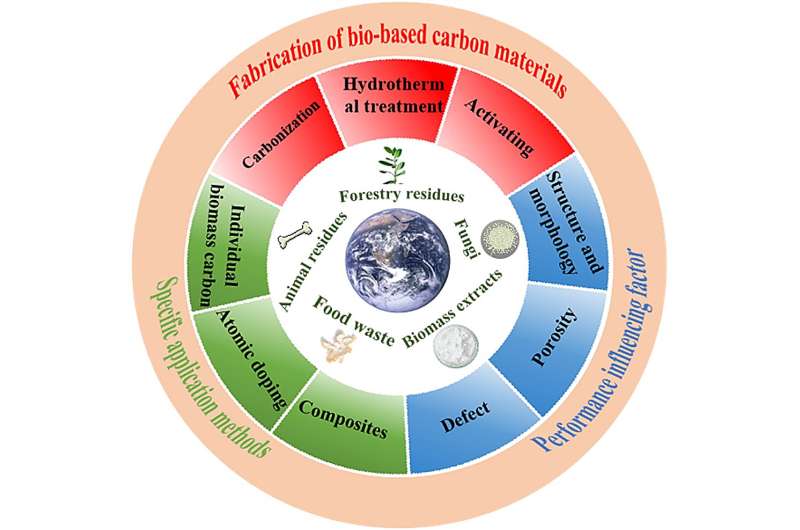This article has been reviewed according to Science X's editorial process and policies. Editors have highlighted the following attributes while ensuring the content's credibility:
fact-checked
proofread
Enhancing rechargeable batteries with carbon solutions

In a new review published in Resources Chemicals and Materials, a team of researchers from China examined the potential of biomass-derived carbon materials for high-performance rechargeable battery electrodes.
A key piece of information that stood out was the authors' emphasis on the hydrothermal method as an approach for synthesizing biomass-derived carbon materials. "In our assessment, we posit that the hydrothermal method stands out as the most promising approach for crafting biomass-derived carbon materials. This technique not only offers a high degree of control but also demonstrates remarkable efficacy in tailoring the microstructure of these materials," says Qiankun Zhou.
This underscores the importance of precise microstructure control in optimizing the performance of these carbon materials, and the hydrothermal method appears to offer a unique advantage in this regard.
Another interesting aspect of the review is a summary of incorporating other elements into the biomass carbon structures to achieve synergistic effects. The authors suggest that this strategic amalgamation can lead to superior performance in ion batteries.
"Achieving optimal performance often necessitates the incorporation of other elements into biomass carbon structures. This strategic amalgamation leads to a synergistic interaction between the various components, culminating in superior performance in ion batteries," adds Zhou.
Throughout the review, the authors maintain a balanced perspective, acknowledging the challenges faced by biomass carbon materials, such as limited efficiency, modest yields, and complex fabrication processes. However, they firmly believe that these materials align with the trajectory of future development and possess extensive potential for applications beyond energy storage.
Overall, this review offers a comprehensive and insightful exploration of the use of biomass-derived carbon materials in high-performance rechargeable battery electrodes. It highlights the promising avenues for optimization through microstructure control and strategic incorporation of other elements while recognizing the growing concerns surrounding the environmental impact of traditional metal-based electrode materials and the need for more sustainable alternatives.
More information: Qiankun Zhou et al, Biomass carbon materials for high-performance secondary battery electrodes: A Review, Resources Chemicals and Materials (2024). DOI: 10.1016/j.recm.2023.12.002



















